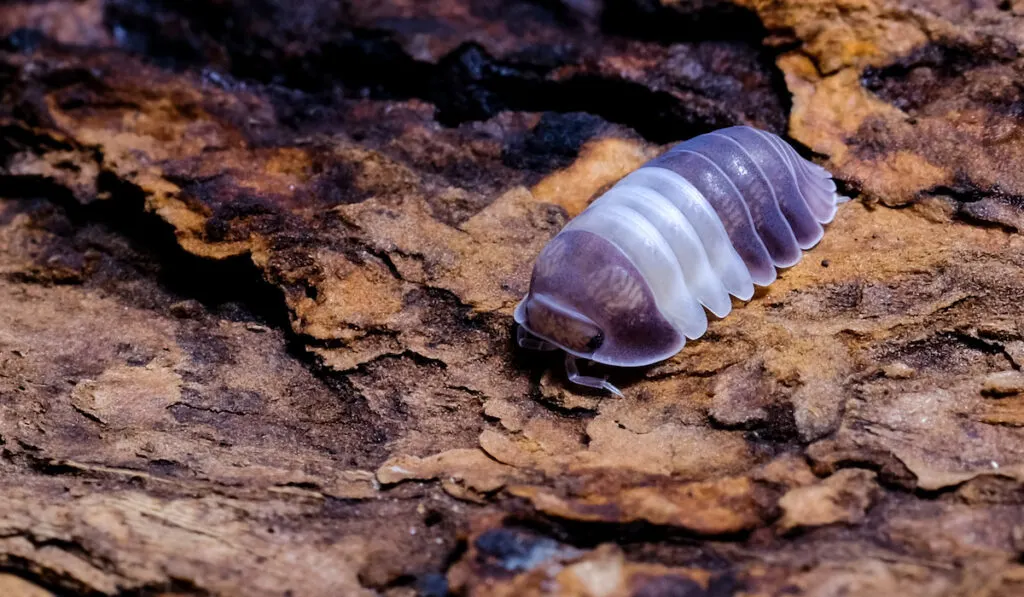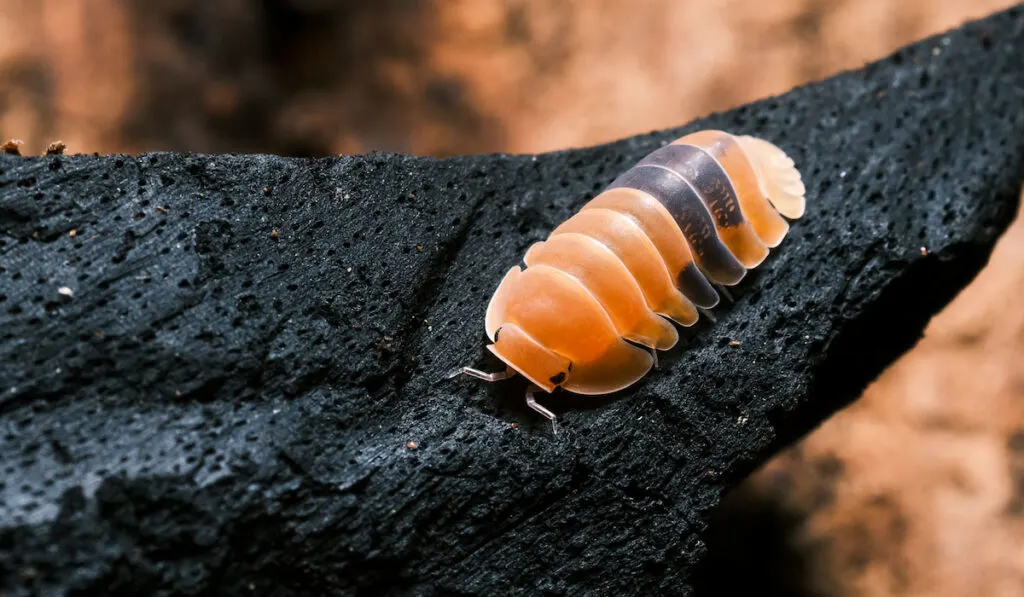There are tons of isopod species in this world and they can live in a variety of places including the ocean, lakes, ponds, and land. They all have an equal number of legs on each side of their body, so does that mean that terrestrial, or land-based, isopods make good climbers?
Can isopods climb grass?
Isopods can climb grass as well as many other obstacles and items in their natural habitat. Isopods are able to use all of their legs to help them cling onto and climb certain surfaces.
There are, however, some things that isopods are unable to climb well or even at all. Isopods are adept at climbing on grass and other things in their environments.
It is important for isopod owners to understand how isopods climb grass and what other surfaces they are able to climb.

Table of Contents
How Can Isopods Climb Grass?
Isopods are able to climb grass because they have a balanced number of legs on their bodies that work in unison to help them climb. They are able to latch onto and use their legs to climb on blades of grass. Each section of their body essentially has its own set of limbs, allowing an isopod to climb most natural surfaces easily.
Hanging onto a textured surface like grass is relatively easy for an isopod. They typically move rather slowly, however, isopods can climb grass when they want to. They will not usually climb very high because the higher they go, the more their weight will weigh down the blade of grass.
Why Do Isopods Climb Grass?
Isopods climb grass to find food and discover new areas. You may not see them climbing grass often in the wild, however, they are able to do so in the right circumstances if they want to. Isopods in nature also climb grass to reach other plants, especially those in a garden where food is plentiful.
In captivity, they may climb grass in an attempt to explore their surroundings and, inevitably, to find other food sources. While isopods enjoy exploring their surroundings, they also enjoy staying in their safe, moist homes whenever they can.
If you see your own isopod climbing grass a lot, you may want to make sure their enclosure is moist enough and that they have plenty of food at ground level.

If Isopods Can Climb So Well, Why Do We Not See Them Climbing More?
Isopods that live on the land can climb certain things, however, they prefer to live in dark, wet areas. This means that isopods prefer to live under things that sit on the moist dirt like rocks, fallen limbs, logs, cinder blocks, and other things.
The more they climb, the further away from their preferred environment they are. Typically, if they are climbing, isopods are moving to a new moist area, simply looking for some food or both. They will return to their dark, moist habitats as soon as possible.
Underneath things, not on top of things, is where isopods can stay safe, hydrated, and fed.
Why Do Isopods Prefer Moist Areas?
Isopods have to live in wet, moist areas because it is essential for their lives.
Isopods are only able to breathe in oxygen through gill-like apparatuses on their bodies.
This means that isopods need water in their environment so they can pull the oxygen from it.
Terrestrial isopods do not need to submerge themselves in water to breathe, but they do require moisture and water in their immediate environment.
Without water and moisture in their environments, they dehydrate and die quickly. This is why isopods cannot climb very high on grass and other obstacles in nature because they run the risk of drying out in dry air.

What Can Isopods Climb?
Isopods can climb many things in nature, although they do not usually climb very high. Mostly, they climb obstacles that are in their way to their intended destination. Isopods can and will easily climb over moss on the ground, plants that grow close to the ground, leaves, small branches, dirt mounds, mulch, coco fiber, small rocks, and more.
In nature, you may see them climbing up wood fence posts and tree trunks, especially if it has rained recently.
In their enclosures in captivity, isopods can climb these same items as well as food and small twigs. They will climb anything they need to as long as it has a slightly rough surface and it is feasible as well as safe for them to climb.
What Do Isopods Not Climb?
Isopods seem to have trouble climbing vertical, smooth surfaces like plastic and glass. This explains why many isopod enclosure products have smooth plastic walls. This helps to prevent escaping as most isopods will not even try to climb vertical glass or plastic surfaces.
Some isopod owners opt to leave their isopod enclosures without a lid, although that is not recommended for all. Isopods usually do not climb tall plants either, since they move slowly and the higher they climb, the less moist their environment becomes. They stick with short, easy to climb obstacles that keep them out of harm’s way.
Why Are Isopods Unable to Climb Glass or Plastic?
Isopods are unable to climb completely smooth and vertical walls made of glass or plastic because there is nothing for them to hang onto.
If the isopod has nothing to latch onto, climbing vertically up a smooth wall is practically impossible. You may occasionally see isopods attempting to climb the plastic walls of an enclosure, although they will not climb very high. If you see an isopod climb rather high up a plastic wall that is straight up and down, then the surface may not be completely smooth.
9 Things You Should Include in an Isopod’s Enclosure for Their Benefit
- Dead leaves or leaf litter
- Moist mulch
- Small Rocks
- Moss
- Moist Soil
- Small twigs or pieces of wood
- Small plants or grass
- Nutrient-rich substrate
- Pieces of moist food

Why Your Isopod Does Not Climb
While isopods can climb obstacles in nature and in captivity, it does not mean that they will climb things. You may notice that your isopod rarely climbs things within the enclosure. That can be good or bad depending on the situation. If your isopod has plenty of food and a moisture-rich environment on the ground floor of its enclosure, it may simply not need to climb.
You can provide obstacles for your isopod, but you cannot force it to climb. By nature, an isopod wants to stay where there is food and moisture, so as long as it has both of those things, it should be fine.
In this scenario, it is possible that your isopod is just extremely content. If your isopod suddenly stops climbing, make sure it has plenty of moisture within its enclosure, especially at the bottom.
Without adequate moisture, an isopod will begin to dry out and may be unable to move at all.
Final Thoughts
Isopods may be extremely small, but do not let that fact fool you. Isopods can and will climb up some grass as well as over leaves, twigs, rocks, and more.
This does not mean that you will see many isopods climbing high grass or tall plants in nature, though.
Resources:
Learning about isopods and whether or not they can climb grass was an enlightening experience. I used the following sources to write this article.
